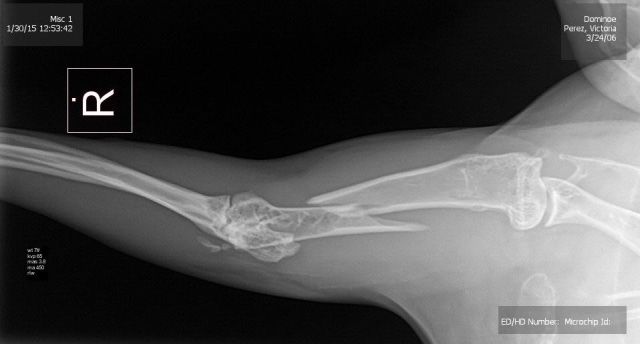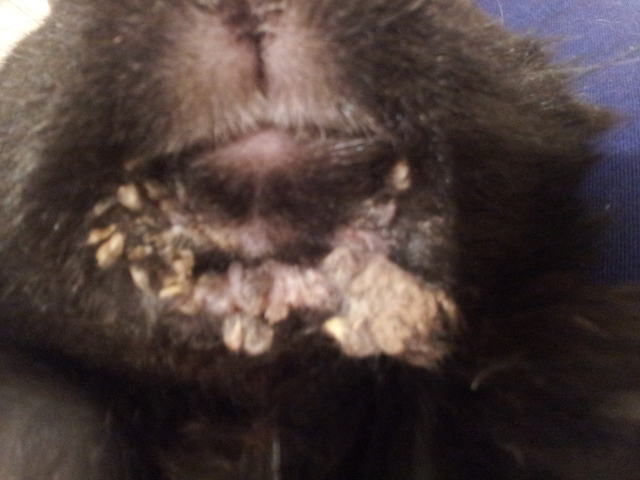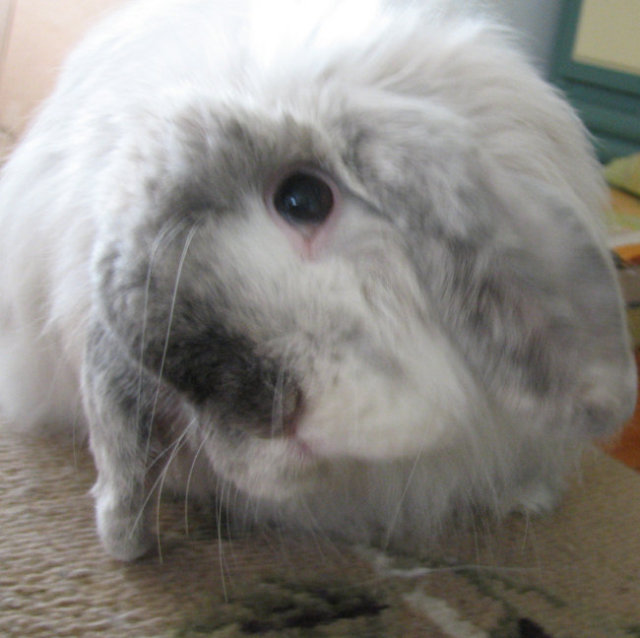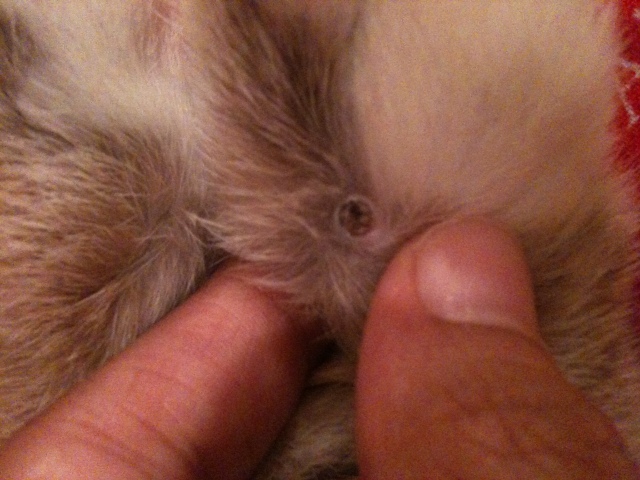QuestionQUESTION: Hi,
My name is Timothy and I am 13 years old and I am interested in learning genetics, not only for color but for conformation.
My interest is in Tri-Colored Mini Rex rabbits and I have been doing research and trying to learn genetics before I purchase any mini Rex rabbits. I want to breed true-to-type and I want to learn how to breed for the best chance of quality tri-colors that I can, not only for color, but fur density and ear type & size.
I would very much appreciate direction as to where I can find the best correct advice.
Note from Tim's father: Tim is an exceptional child and very responsible. To let the reader know him some, he is a straight A student, never had a B or lower, plays the guitar Atkins style, brown belt in Shotokan Karate, trains in JKD and plays the Shakuhachi flute and reads Japanese music. He also has completed several college courses from Hillsdale and has his Tech. & Gen. Amateur Radio License. I tell this (not only to brag a bit) but to let you know he is serious about learning before delving into this endeavor.
Thanks,
Timothy and father Robert
ANSWER: Hi Timothy,
First I commend you for your dedication to learning. We need more youth like you in this rabbit hobby. I am going to be honest about tri colored Mini Rex. Generally speaking you can have the best tri in the universe and they are often overlooked by the judges. Mostly because it is extremely rare to have a tri that can compare to the other varieties. I will do the best I can to help you.
As you stated breeding true to type is the most important aspect when breeding any rabbit. I am not a big fan of people that just breed for color. I believe that breeding for type and fur is the only way you will ever improve. That being said I would start to look for the very best broken red, broken castor, broken opal or broken chocolate agouti that you can find. When breeding for tri's I really like to stick with rabbits that are genetically agouti for the first generation. If you start with a self color (black, blue, chocolate or lilac) you have a stronger chance of producing torted tri's which are not showable. In order to produce a true tri your rabbits need to either carry a double ej (japenese) gene or an ej and e gene. People generally do not breed torts into their agouti or tan patterns. A tort is more apt to come out of a self gene than an agouti or tan. Don't get me wrong I have seen many torts that have come out of castors. I would prefer to use an agouti in my tris for that reason.
The E gene is one of the most difficult to understand. A rabbit that does not have any shading is considered to have full extension of color (E) there second gene can either be another E or it can be Japanese (ej) <--- that is your tri gene, or non-extension (e) these are torts, sable points, and reds, etc. Now if you want to produce a tri at least one of your rabbits must have an ej gene and the other needs to have an ej (preferred) or an e. Often times on your first generation breeding to an agouti you will get an agouti rabbit with big black spots all over it or harlequin barring on its stomach. This happens because the rabbit has a full color gene (E) and a tri gene (ej). I prefer to use reds with a double A gene (agouti) to tri's because 100% of the babies will carry eje or ee (torts). Meaning all of your offspring will either be tri or tort which are all showable. If that agouti happens to carry self (Aa) there is a possibility it will produce torted tri's. You must understand the A gene to understand the difference between agouti, tan and self. There are web-sites out there that explain the different color and pattern genes in rabbits. I will try to post some below.
I strongly recommend that if you decide to breed Mini Rex that you join the ARBA first and then the National Mini Rex Rabbit Club. With your membership you receive a guidebook with articles written by people who have raised rabbits for many years. There is a chart in the book that explains genetics and it is a lot easier to understand than what I am trying to teach you.
Here is a basic summary of breeding examples:
**tri to tri ejej eje ee (best choice for color not so much for body, can produce tri/tri that carries tort/tort)
agouti to tri -- can produce Eej Ee eje or ee(harlequin/barred/spotted or agouti that carries tort, tri that carries tort, or tort)
self to tri -- can produce Ee Eej eje (self that carries tort/self that carries tri/tri that carries tort)
torted tri to tri -- (the torted tri is eje that is the only genetic possibility for a torted tri/ ejej <---This is what you ultimately want whether in the self pattern or agouti pattern)
Regardless of what you choose to start with your ultimate goal is to produce an animal that carries a double ej gene. The only way this is possible is if both parents carry it. It is very difficult to disprove a gene. You can assume that if you bred a rabbit 100 times and it produced agouti all of those times that it carries two agouti genes. However, it can't be proven as it pertains to which gene is given to those offspring. Without genetic testing there is absolutely no way to prove 100% that a rabbit carries two dominant genes. There is one way to prove that the offspring carry two ej genes. By breeding two agoutis that carry the tri gene (the barred or spotted marks) you can prove without a doubt that the offspring carries a double tri gene if they are properly marked without agouti influence (ex. a castor with barring/spots). For example you breed rabbit 1 that is a castor with tri barring on its stomach to rabbit (Eej) 2 which is a broken castor with big black spots all over it (Eej). Since the rabbit gets one gene from each parent, this rabbit has 3 possible genetic outcomes EE (no tri at all), Eej (agouti with spots/barring) ejej (tri! what you want). Once you develop these ejej tris this is what you want to use in your future breedings.
I strongly suggest that when you get the type you are looking for and the tris that are ejej that you stick with that line. If you have areas that need to be improved you will need to start the process again with the lines you wish to add. Try to remember that breeding a true ejej to an ejej will give you 100% ejej whether they are agouti, tan or self. Developing the ejej can be done in 2 generations but again it comes down to probability. Breeding the barred/spotted agoutis to each other can give you a litter full of non tri agoutis but the probability of this happening is only 33% so if it does then just try again.
I hope that you can understand this. I am willing to help you learn but I can explain things a lot easier in person. I strongly suggest that you find a mentor in Florida that can help you. There are some very good breeders in Florida that raise Mini Rex and have raised tris in the past. I suggest going to some shows and getting to know the people in your area. I am willing to give you a few names if you send a new question and make it private. I also suggest that you check out 2nd Tri Rabbitry in Texas. They have some of the best Tri's in the country. If you are going to invest your time and money into breeding these beautiful animals it would be best to start with the very best rabbits you can get. They may also be able to sell you animals that already carry the ejej gene and this would save you a minimum of one year of work.
http://www.2ndtrirabbitry.com/
Good luck with your project and if you need anymore help please let me know.
Pam
---------- FOLLOW-UP ----------
QUESTION: Hello Miss Pam and thank you so much for taking time out of your day to answer my question, and in length too! I will follow your advice,
I follow 2nd Tri from Texas on Facebook and they indeed do have some very nice tri's. I seek out their on-line advice and pictures most every day.
I just recently attended a rabbit show in Ocala and purchased a very nice Charlie mini rex buck and was thinking of finding a Japanese harlequin doe with good type and I am wondering if you think this might be a good choice?
I need to join the ARBA and will look into doing that this coming week.
Thank you once again, you have helped me understand and I am on my way to understanding genetics.
Also, I received an email from this site to leave "feedback" but I haven't found where to do that as it says not accepted.
Thank you once again,
Tim
AnswerHi Tim,
Sorry I didn't reply to you sooner. For some reason your message went to my spam box. You don't have to leave feedback. I turn the feedback off because it is not really that important to me. I would much rather someone send a follow up question if they need more help.
Please let me know if you have more questions. If you do decide to ask more please mark it as private and I will give you my personal email address.
Good luck with your project.
Pam

 Rabbit with Head Tilt Dies
Question
Ebony
We adopted a stray lop bunny five
Rabbit with Head Tilt Dies
Question
Ebony
We adopted a stray lop bunny five
 Broken leg on bunny urgent
Question
Xray
Hi Dana I have a bunny with a brok
Broken leg on bunny urgent
Question
Xray
Hi Dana I have a bunny with a brok
 vet is stumped, ongoing scab under the chin
Question
Anyas chin
Hi my rescue bunny has had a
vet is stumped, ongoing scab under the chin
Question
Anyas chin
Hi my rescue bunny has had a
 Staph. cohnii causing ear infection
Question
8 months of tilt
The results of a culture (pus
Staph. cohnii causing ear infection
Question
8 months of tilt
The results of a culture (pus
 Mini lop missing a nail!
Question
Mochas front nail
Hello Ms. Enve, I own
Mini lop missing a nail!
Question
Mochas front nail
Hello Ms. Enve, I own